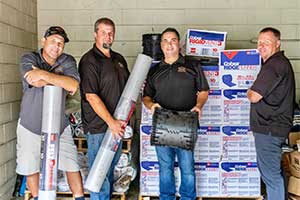Types of Underlayment For Orlando Roofing Repairs & Replacement
Home and business owners in Central Florida understand the importance of residential and commercial roofing, including ongoing maintenance and timely repairs. Just a small leak can cause significant damage that can cost thousands of dollars in repair costs.
Roofing underlayment acts as a protective shield under shingles. It reinforces the barrier against the elements outside. It also significantly increases the strength of your roof.

What is underlayment?
Underlayment is a water resistant roofing material that is installed on the roof deck before the shingles are installed. While you can’t see it when the roof is completed this extra protection from leaks and harsh weather, increases the life span of your roof.
Types of underlayment
Asphalt-saturated felt
Made from asphalt, polyester and plain fibers to create a water resistant and flexible base. It is also called “felt paper” or “tar paper,” which was very popular before synthetic underlayment was developed. It comes in different thicknesses, determining how resistant it is to water.
Self-adhered
Made from polymers and asphalt, making it water resistant. It comes with a sticky adhesive on the back for easy installation. It also creates a tight seal between the roof deck and underlayment. Often used in areas that commonly get damaged, such as vents, valleys, and chimneys. This material tends to be more costly, compared to the other underlayment.
Synthetic
The popular choice with roofers here in the Orlando area. A synthetic base is saturated with fiberglass and asphalt. A significant benefit is this underlayment is lightweight and flexible. It is also resistant to UV rays, mold, and has a long lifespan. It is well worth the investment.
Roofing underlayment provides an extra layer of protection from the elements. Moisture can easily get trapped under shingles causing mold and leaks. Underlayment is water resistant and can save you thousands of dollars in repair costs.